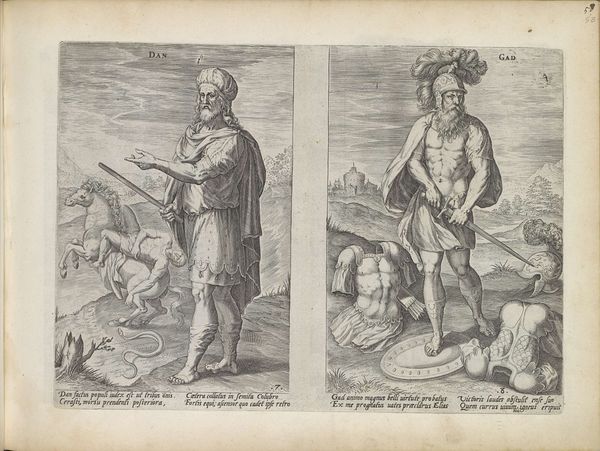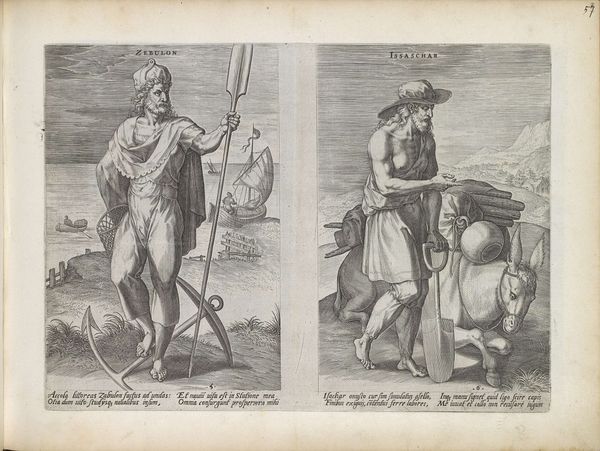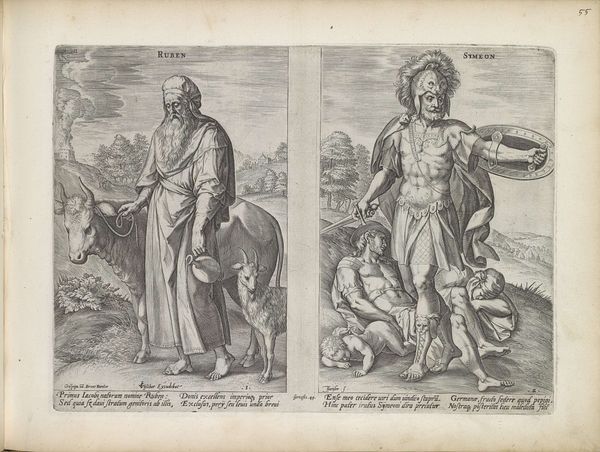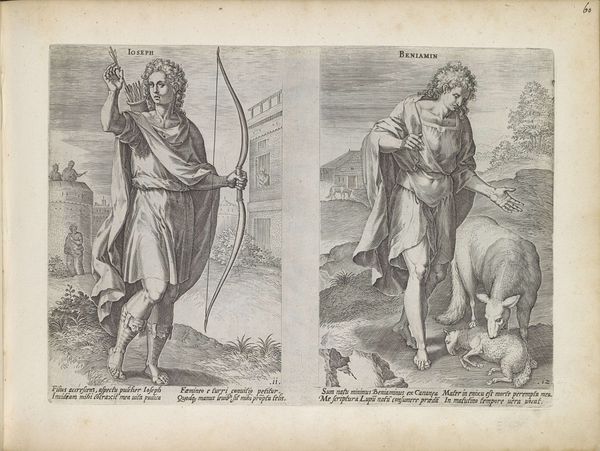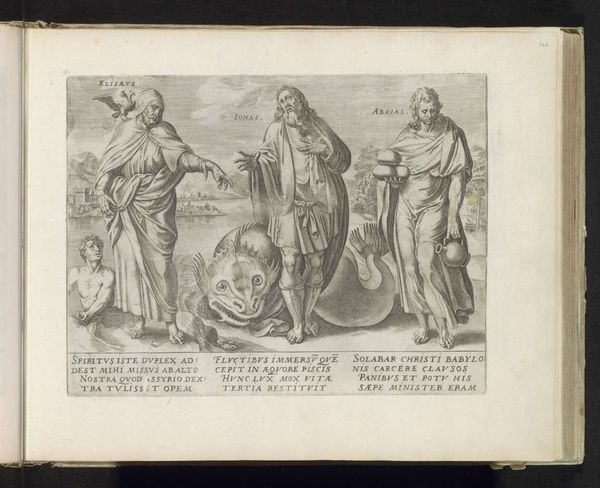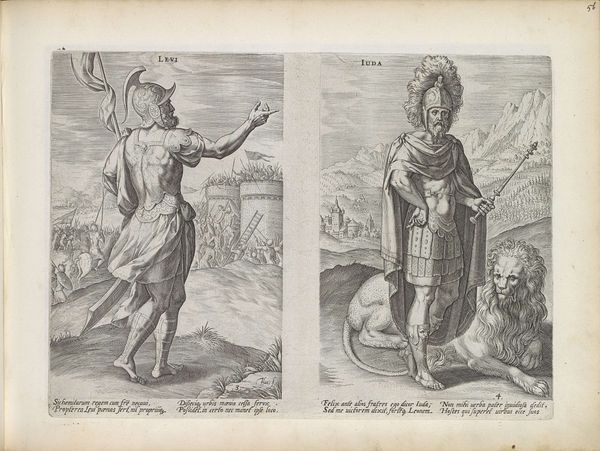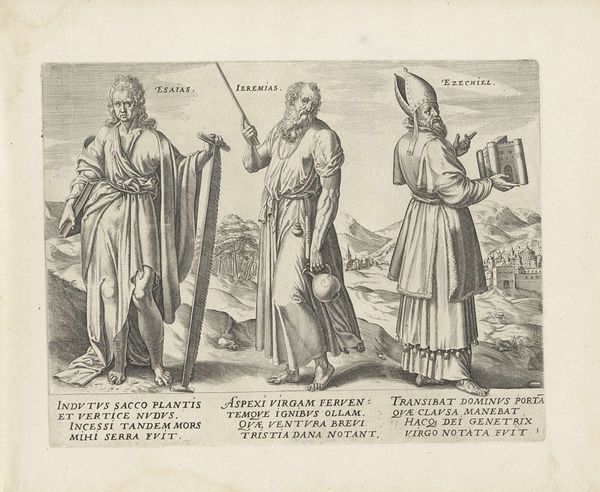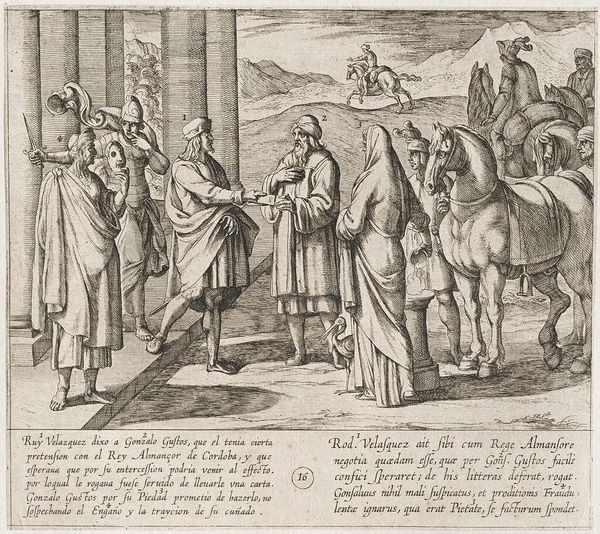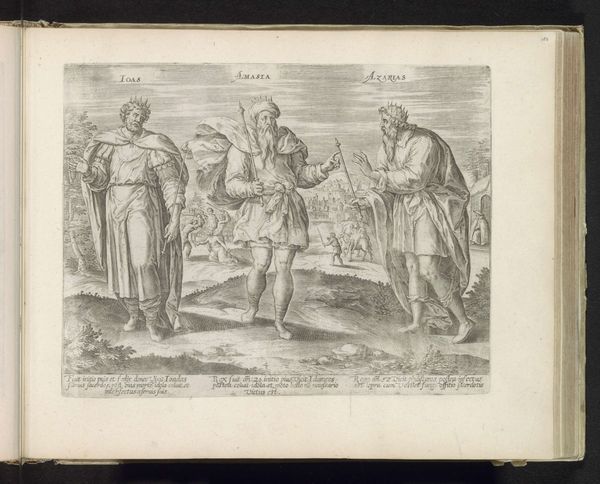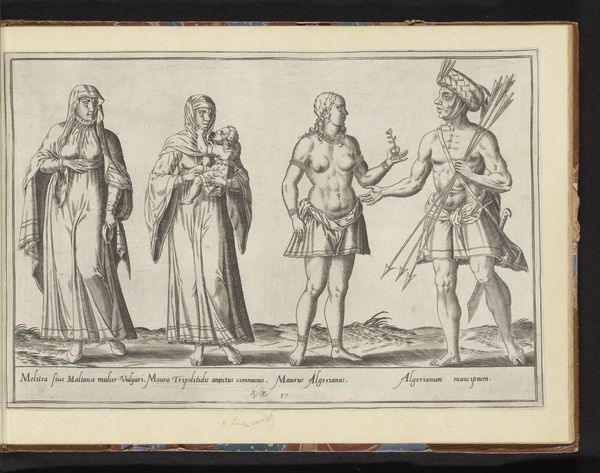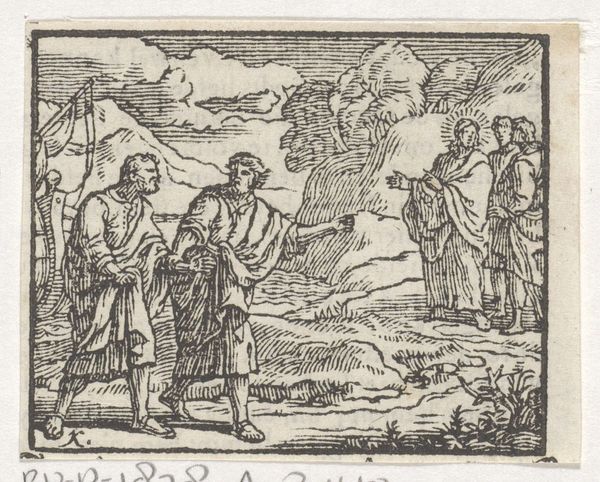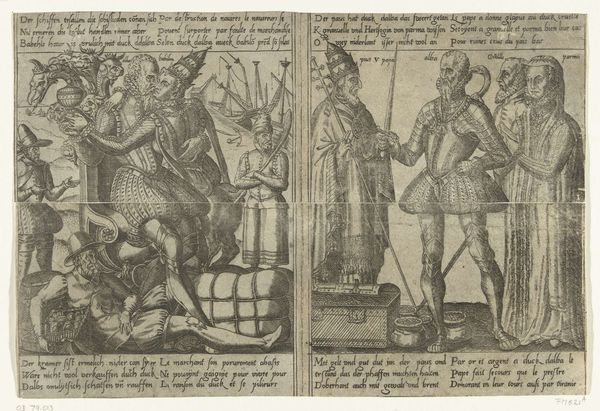
print, engraving
#
allegory
#
baroque
# print
#
figuration
#
history-painting
#
engraving
Dimensions: height 219 mm, width 307 mm
Copyright: Rijks Museum: Open Domain
Editor: Here we have “Stamvaders Aser en Naftali,” a print made sometime between 1585 and 1643 by Johann Sadeler I. It's a detailed engraving depicting two biblical figures, each in their own panel. The stark black and white and the detailed line work give it a formal feeling. What stands out to you about this piece? Curator: I immediately look to the materiality of this print. The very act of reproducing images through engraving democratized access to art and ideas. We should ask ourselves about the socio-economic implications of printmaking at the time, how this mode of production would alter and reify concepts like originality and authorship. The act of creating multiples meant that ideas circulated more broadly, changing how people engaged with narratives. The figuration is important but only insomuch as we understand how these images impacted their contemporary audience. What labor was involved? Who was consuming them? Editor: So you're focusing less on the religious aspect of the figures and more on the social impact of the print itself? The dissemination of these figures more than the figures themselves? Curator: Precisely! Look at the level of detail achievable through engraving, a technique requiring significant skill and time. Who were these artisans, and what were their relationships to the patrons commissioning this work? Further, consider the context in which these prints were viewed: Were they collected, displayed, or used for educational purposes? Understanding the labor, the audience, and the context of consumption is key to unpacking the true significance of this piece. How might owning such an engraving shape one's identity or understanding of history? Editor: That gives me a completely new way to appreciate it. I usually get caught up in trying to decode the symbols. Thinking about it as a commodity that had a specific cultural function really opens it up. Curator: Indeed. It allows us to move beyond the image and consider the broader social and economic forces at play during its creation and circulation. The artist’s work reflects and also reinforces specific societal expectations, class divisions, religious dictates.
Comments
No comments
Be the first to comment and join the conversation on the ultimate creative platform.
